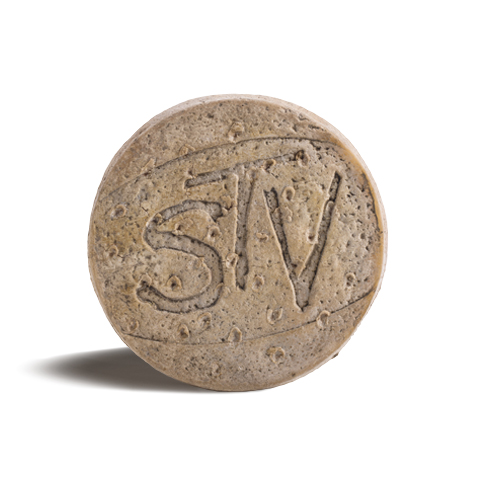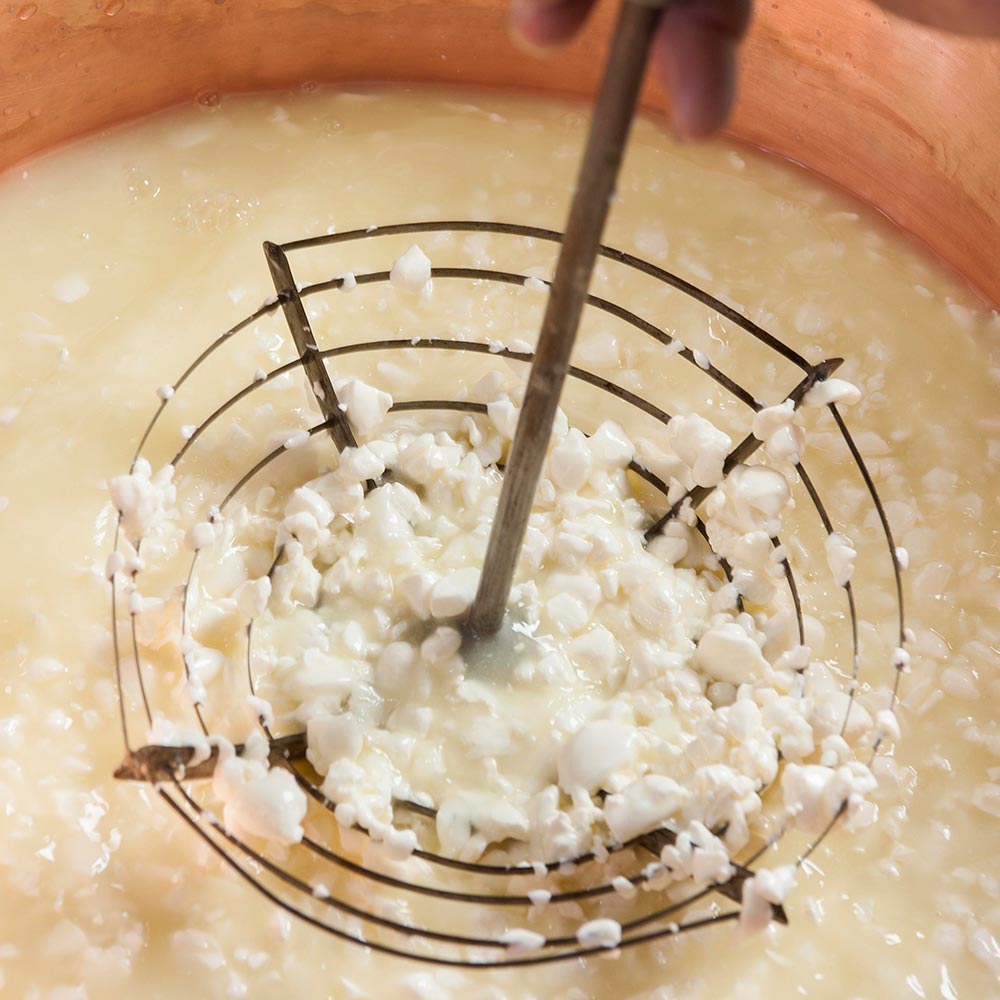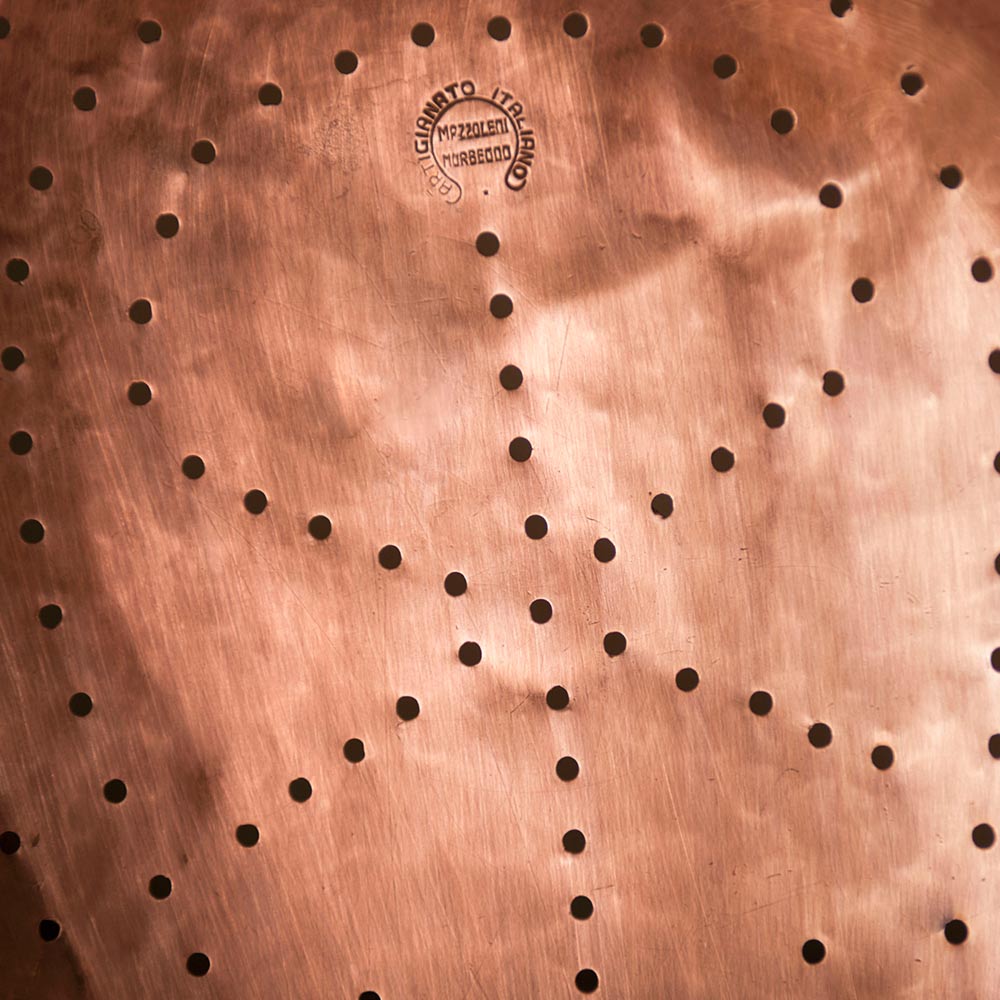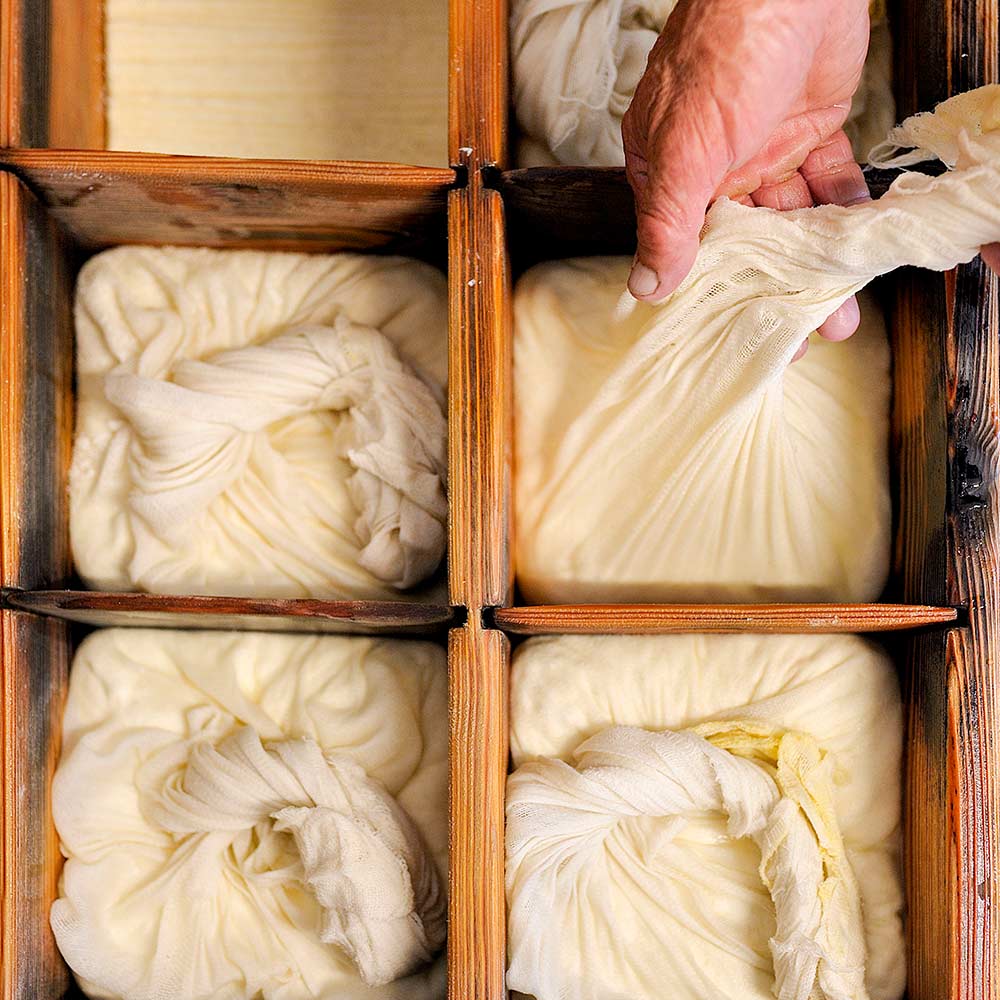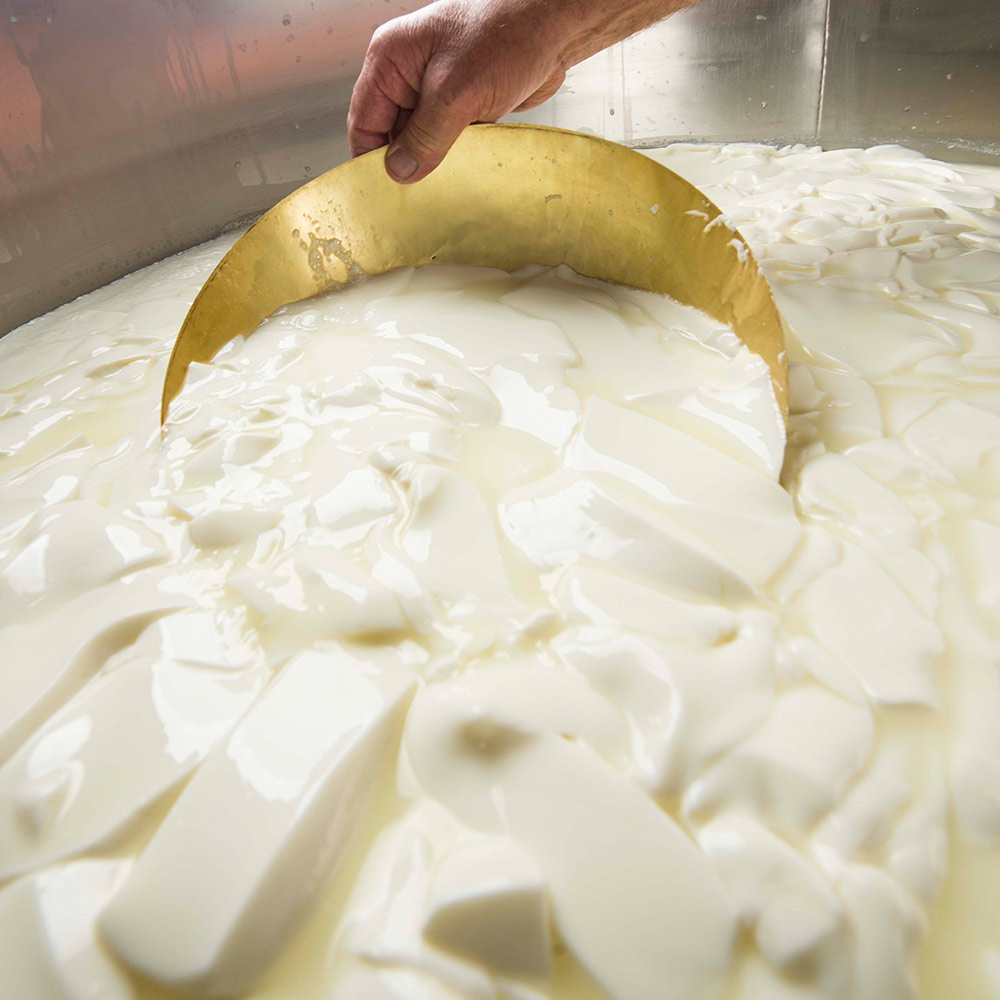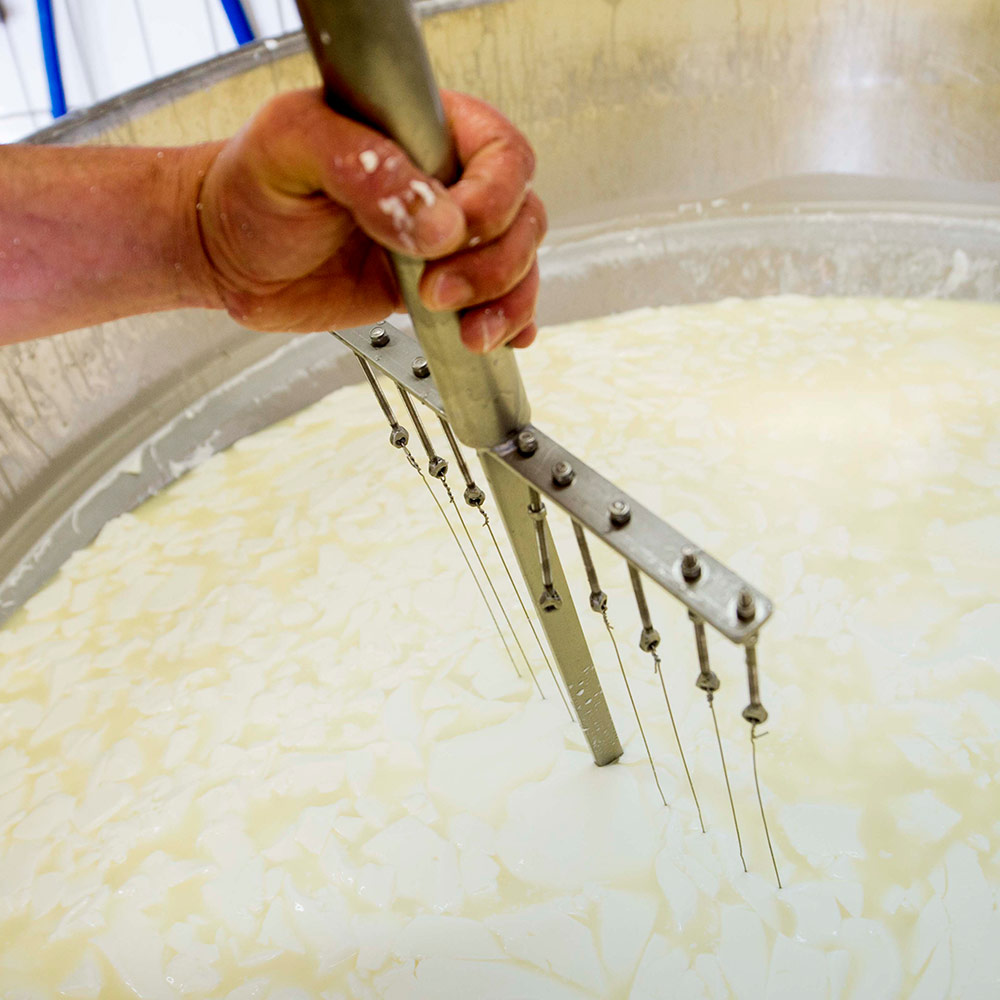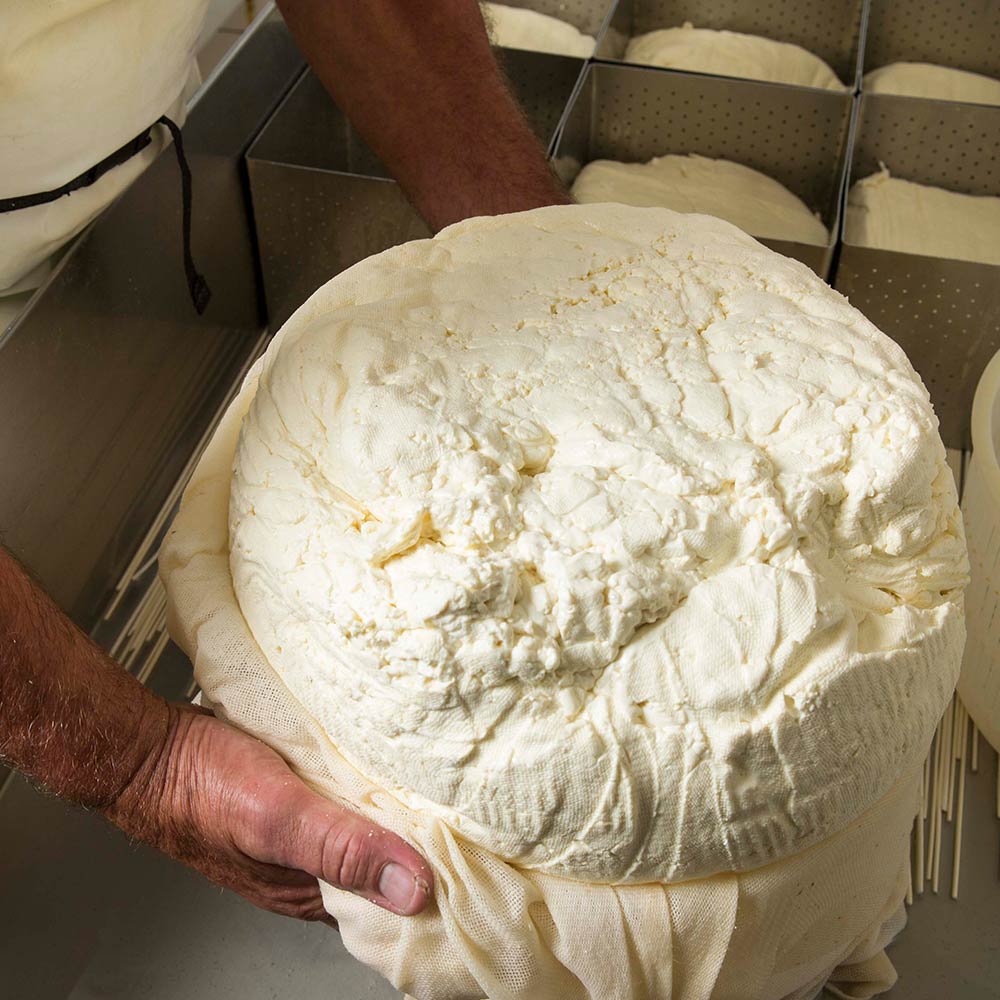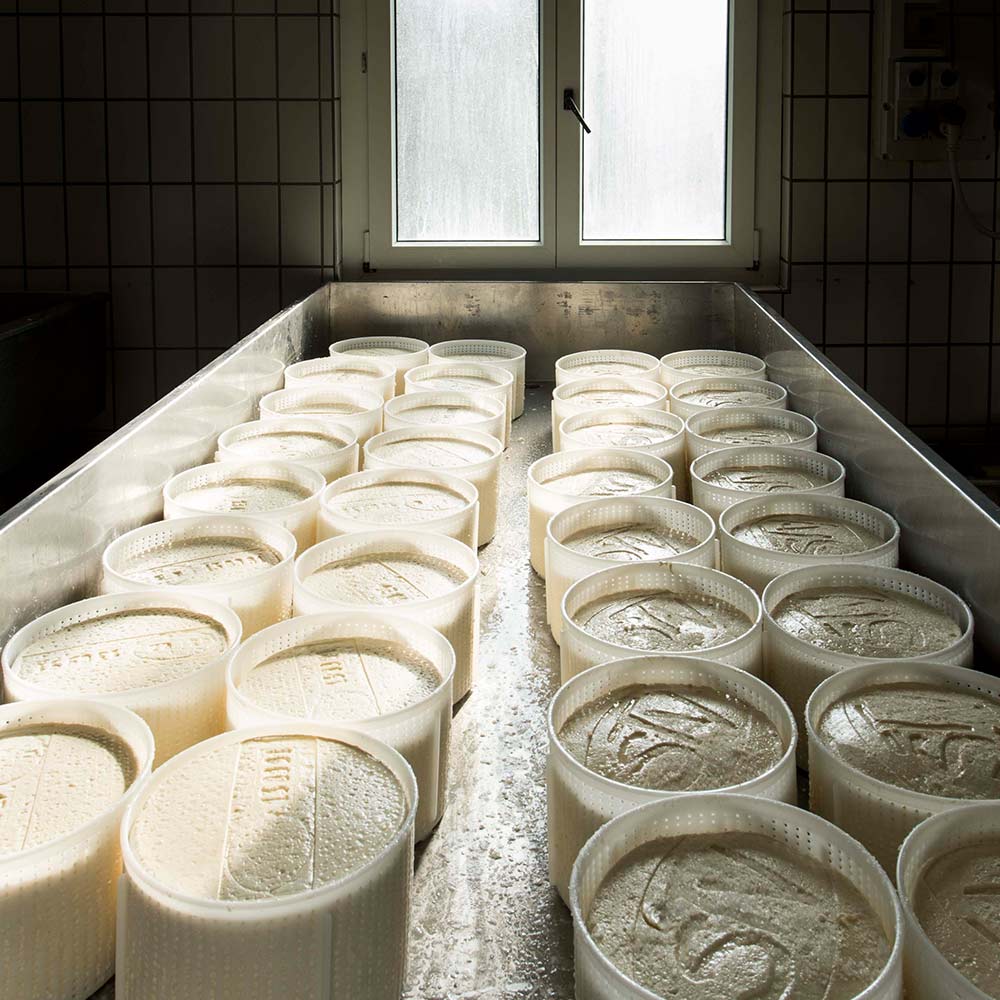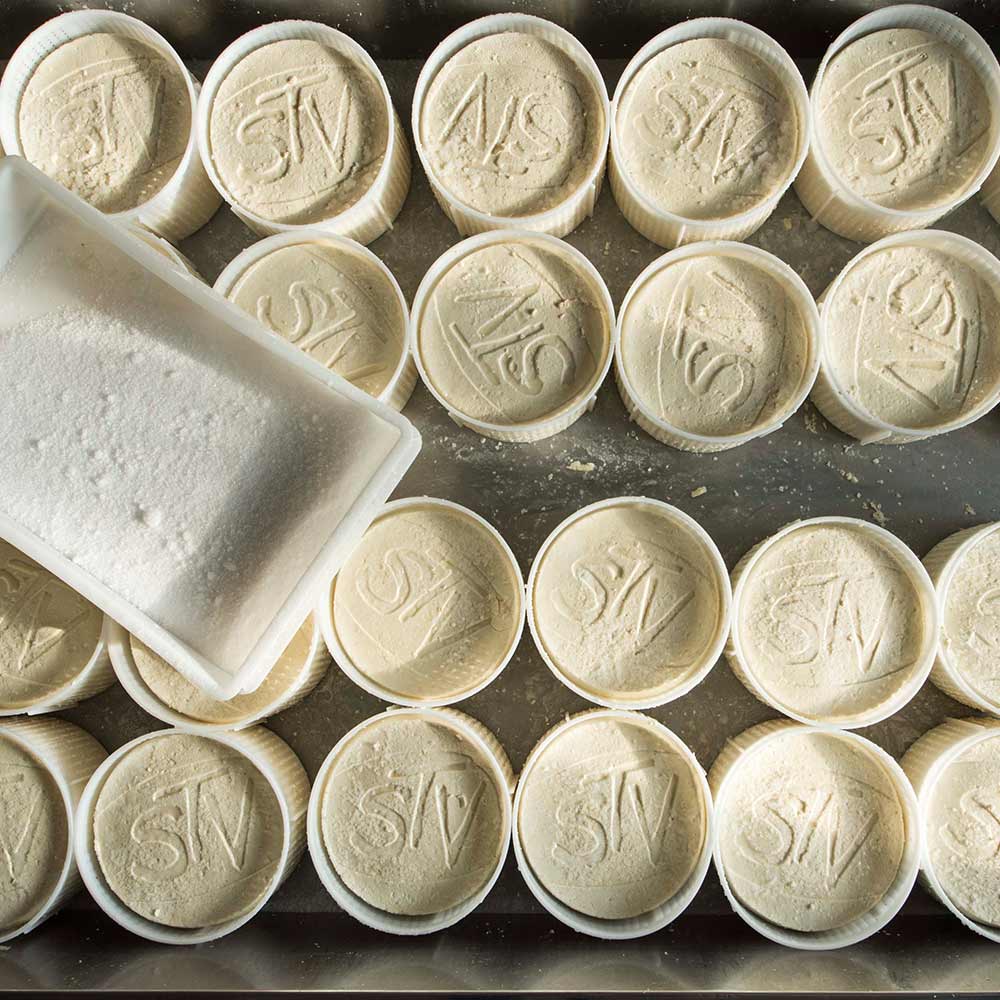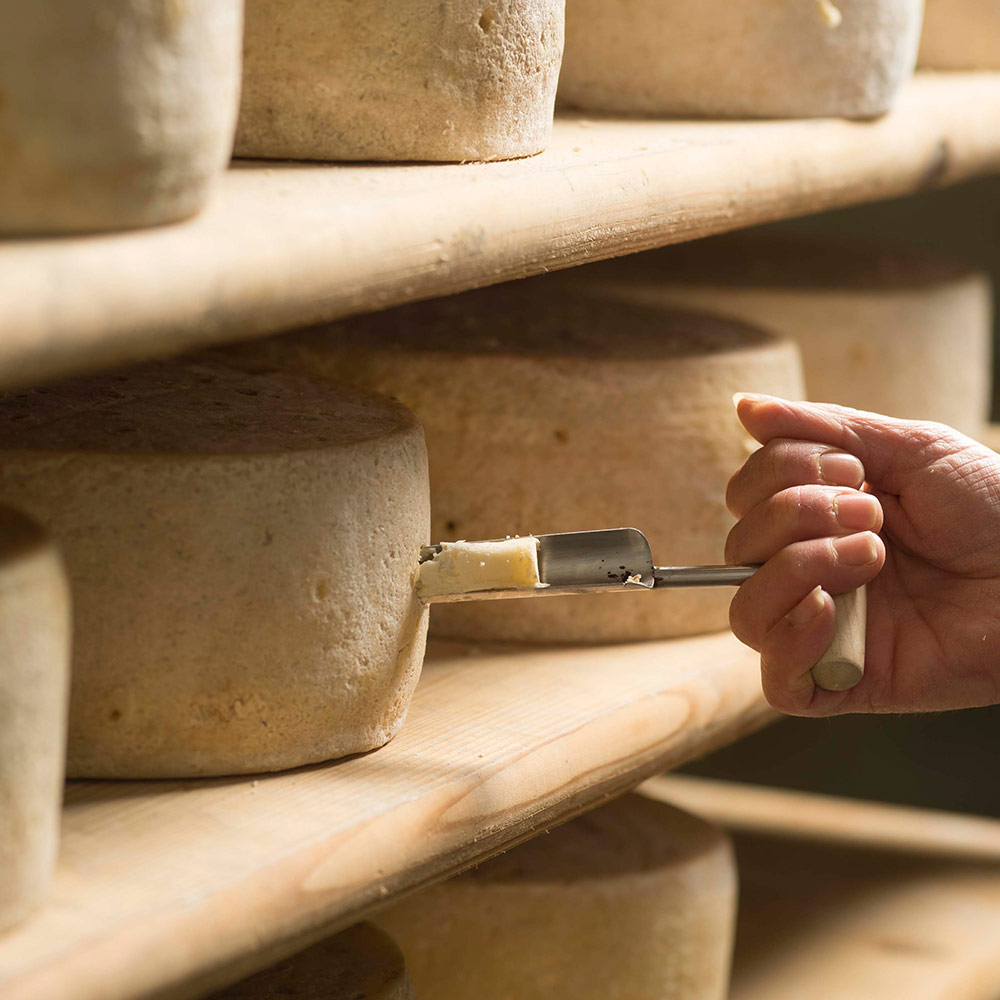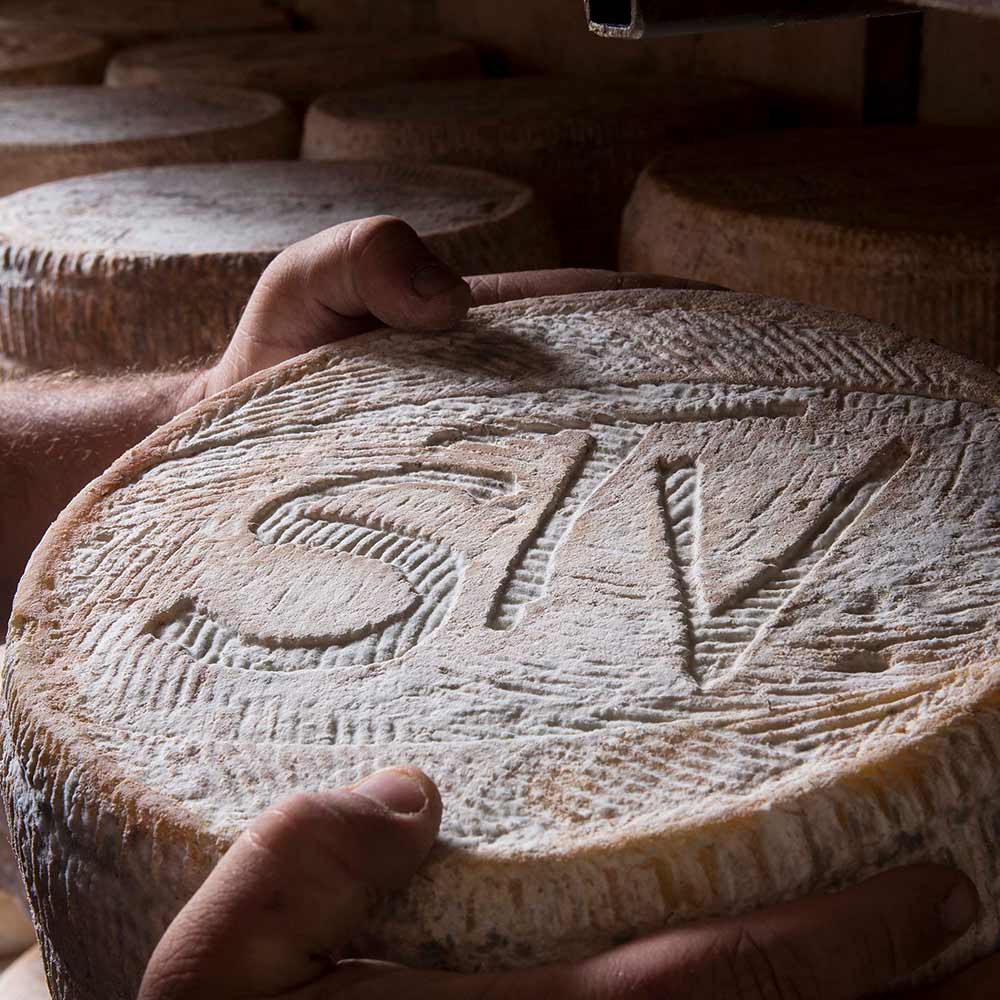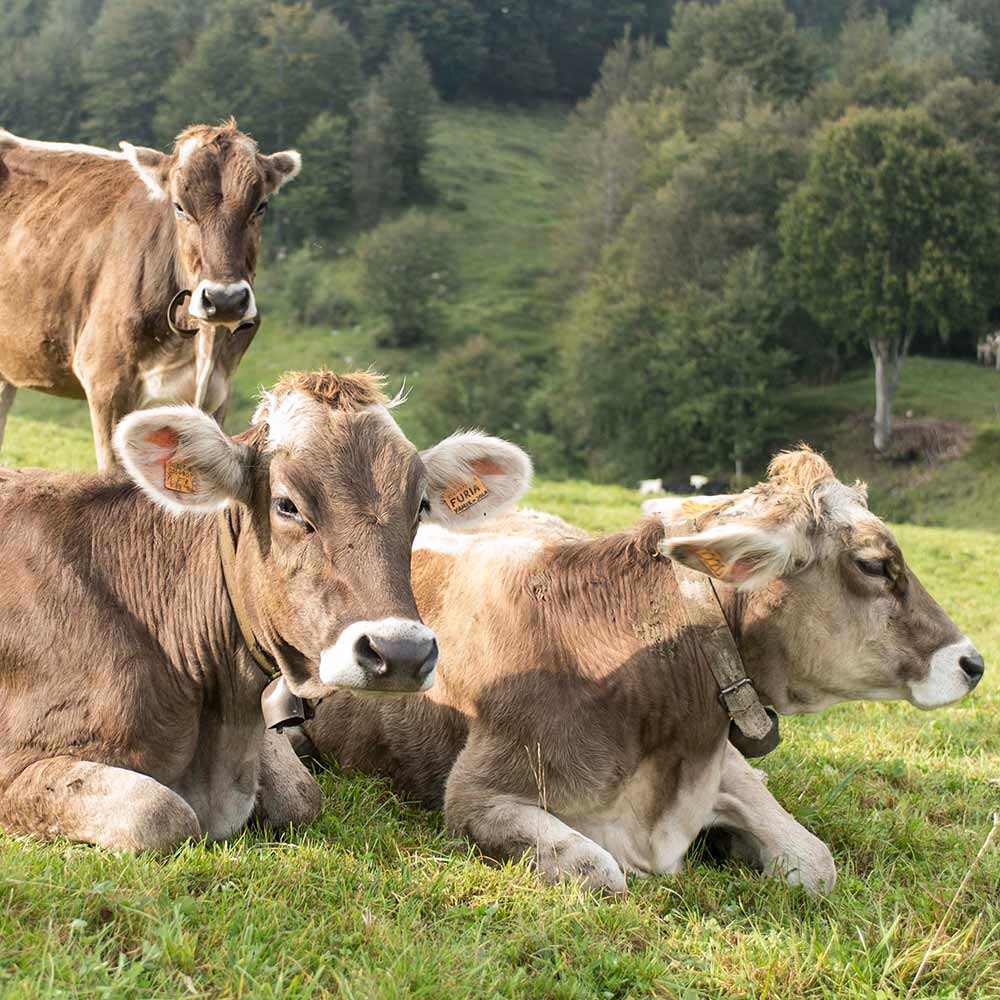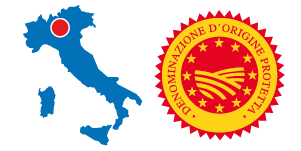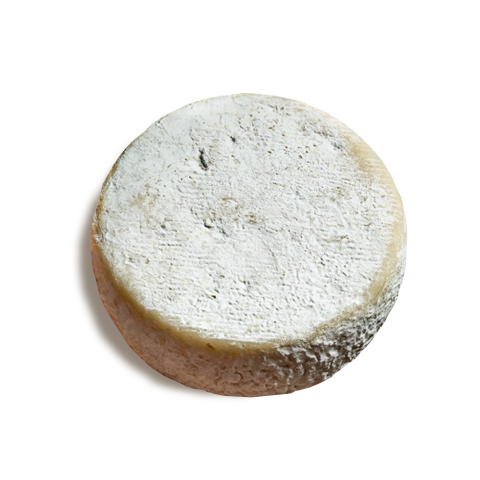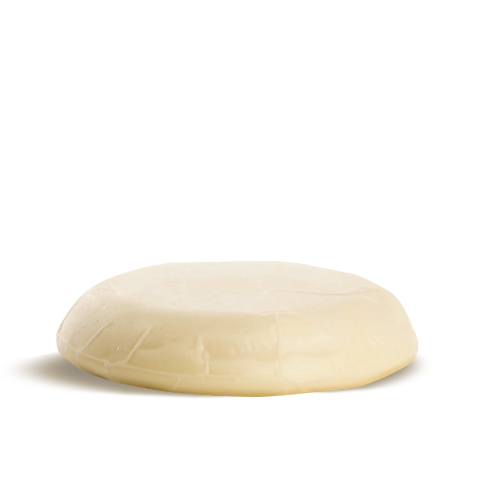Description
The Consorzio Di Tutela Strachítunt Valtaleggio was established in the early 2000s with two main aims: to protect such a prized product, which had already been the subject of numerous imitations and mispronunciations, and to obtain Protected Designation of Origin (PDO) status. In order to preserve the identity and the uniqueness of Strachítunt, the specifications are very strict. The production territory includes four municipalities: Taleggio, Vedeseta, Gerosa (a hamlet of Valbrembilla) and Blello.
The milk must come from cattle reared on farms in the production zone, with 90% of the total coming from Bruna Alpina breed cows. These cows must be 65% grass and hay-fed and 90% must come from the Val Taleggio area. The Consortium currently has eleven cheese makers-ripeners working across the whole chain, all of whom are based within the territory envisaged by the specifications.
